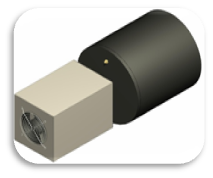Compact QRFH Cryogenic Receiver for VLBI & Radioastronomy
Callisto is pleased to announce that the design activities have started for the prototype of a new compact, zero maintenance cryogenic Receiver including the Caltech designed QRFH feed. This new RF receiver is being developed to meet the VGOS specification for VLBI. It could also be used for more general radioastronomy applications.
The design is focused on low maintenance, very low power consumption with Noise Temperature performance that meets the VGOS requirements. This is a state-of-the-art piece of equipment for telescopes all over the world but with particular interest for those operated in remote locations where energy costs are high and maintenance logistics is particularly complex and expensive.The design work has started this summer with studies on RF and electrical circuits plus some de-risking test activities on the thermal, RF and mechanical designs, aiming at the validation of design concepts prior to prototype detailed design. De-risking tests activities have already produced some good results on mechanical aspects with the completion of resistance and leak tests on a large vacuum window and cryogenic and RF tests will continue during September 2014.
By October 2014 Callisto will be able to confirm the expected performance of the compact QRFH cryogenic receiver.
The following table summarizes the expected performance of the receiver:
|
Parameter |
Value |
Comment |
|
Frequency |
2-14GHz |
|
|
NT |
<40K |
At Dewar window excluding external noise contributions (Tsky, Tg, Tant) |
|
Gain |
>33dB |
|
|
Cooldown Time |
2h |
To reach RF specification |
|
Operation type |
Continuous |
For at least 5 years without maintenance |
|
Maximum Input Power |
<400W |
This value is 10 times lower than most of the receivers based on GM coolers. |
|
Weight |
<15kg |
|
|
Dimensions |
L633mm x W311mm x H311mm |
The detailed design phase is expected to be concluded before the end of 2014 with a Critical Design Review to be attended by external experts. After the design review it is planned to build and test full prototype in the first quarter of 2015.
Comments are closed.




